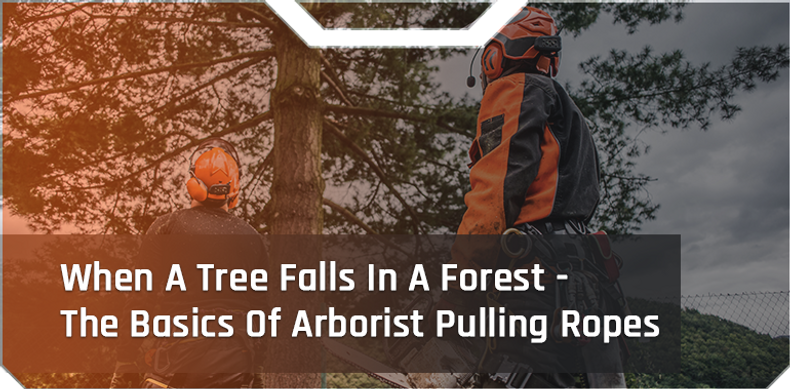Tree Felling is no joke. If you are getting ready to remove a tree, you’d better know the limitations of your pulling ropes. You’d better know a thing or two about mechanical advantage. You’d better know about whether you are going to use a chain and cable winch or a pulling rope.
My friend, you’d better know what you are doing if you are removing a tree.
What Are Some Limitations Of Pulling Ropes In Tree Work?
Whether you are calling your rope a tree rigging rope, a bull rope, or a pulling rope, the reality remains the same. There are some limitations that you need to consider.
In life, in climbing, in rigging, and especially in tree removals, arborists don’t like stretching.
We talk an awful lot about how tree workers use static ropes (firm, non - stretchy ropes) for climbing, but it is just as important that ropes used for tree rigging and tree removals are low stretch. This is because static ropes minimize the amount of work required to apply the force needed in tree removals.
However, even high strength, low stretch pulling ropes are not invincible. It is incredibly important to pay attention to the MBS (Maximum Breaking Strength) and WLL (Working Load Limits) of pulling ropes. After we give you a short general list of limitations of pulling ropes, we will revisit this point with a little more depth.
Some Limitations Of Pulling Ropes In Tree Removals:
- Any Knotting In A Rope Can Cut A Ropes Strength In Half
- Many Of The Strongest Fibers Have Low Shock Absorption
- Exposure To Sunlight Can Decrease The Strength Of A Rope
- Dirt, Sap, Pitch, And Water Can Damage The Fibers Of A Rope
As we said before, knowing the MBS and WLL of your rope is crucial. Respecting the limitations of a pulling rope is even more important. One of the more frightening things about tree work is that the core of a rope can be melted away from working past the line’s limits.
This type of damage is not always obvious and the dangers of using a rope with a damaged core are very serious.
What Should You Look For In A Pulling Rope?
Some of these limitations can be minimized by picking out the right rope for tree removals. When it comes to arborist gear, a low stretch and high strength rope is almost always desirable and pulling ropes are no exception.
Some Things To Look For In Ropes For Tree Felling:
- Easy Grip
- Low Stretch
- High Knotability
- At Least 150 Ft In Length
- A High Working Load Limit
- A Very High Maximum Breaking Strength
- A Nylon Core And Polyester Cover Will Increase Shelf Life
A Few Other Tips
Since we already mentioned mechanical advantage, it should be no surprise that rigging blocks and other types of pulleys are going to be your friend when you are removing a tree.
Using a side pulling technique will increase the desired tension in your line and also give you more control of the direction of the fall. You will want to use a tree with a good amount of distance from the tree being removed as your anchor point.
Other Pointers:
- Side Pulling Will Increase Tension And Control
- Remember That Using Knots Can Cut The Strength Of A Rope In Half
- Use Arborist Blocks And Pulleys To Increase Mechanical Advantage
- Choose A Second Tree With Some Distance Away As An Anchoring Point
- Lower Stretch Ropes Will Decrease The Risk Of A Tree Flying Back At You If The Rope Breaks
An Alternative To Pulling Ropes
If you are removing a very large tree, you may consider using chains and a cable winch. This is considerably more expensive and can add extra work, but in some ways it is a safer option.
Chains are less likely to break than pulling ropes and in the unlikely event that they break, the rope will swing at a much lower speed than a rope.
Pulling Ropes, Tree Removals, And You
If you are able to recognize and acknowledge the limits of pulling ropes and other arborist gear, you will be on your way to a successful tree removal. Remember that safety is always a concern when doing any kind of tree work, but you need to be especially mindful of dangers when removing large trees.
Whether you end up using a pulling rope or a chain and cable winch, we wish you the best of luck!





